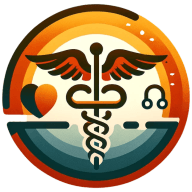How Can You Adapt Quickly to Public Health Emergencies?
In an ever-changing medical landscape, adaptability is crucial, especially during public health emergencies. We've gathered insights from Medical Directors and Physicians, who share their firsthand experiences, from a rapid telehealth transition during COVID-19 to the integration of telehealth and communication strategies. Here are four compelling stories that highlight the lessons learned from these critical moments.
- Rapid Telehealth Transition During COVID-19
- Emergency ICU Conversion Amidst Pandemic
- Adapting Mental Health Care to Telemedicine
- Telehealth Integration and Communication Key
Rapid Telehealth Transition During COVID-19
During the early days of the COVID-19 pandemic, our clinic faced an unprecedented public health emergency that required rapid adaptation. We quickly transitioned to telehealth services, allowing us to continue patient care while reducing exposure risks. Additionally, we restructured our clinic's workflow, implementing rigorous screening protocols and enhanced sanitization measures.
This experience underscored the importance of flexibility and proactive planning in healthcare. The swift adoption of telehealth not only maintained care continuity but also showcased the potential of technology to improve access to healthcare. We learned the value of clear communication within our team and with our patients to navigate such crises effectively, which has since become a cornerstone of our practice's resilience and preparedness for future public health challenges.

Emergency ICU Conversion Amidst Pandemic
In March 2020, our health facility was thrown into unknown waters by the fast-rising COVID-19 pandemic. I had the responsibility of overseeing a team made up of different fields to renovate our existing ICU into a specialized COVID-19 department. Within 72 hours, we reshaped the spaces, acquired ventilators, and put up protocols. This situation required quick action that underscored the value of flexibility and speed in resource mobilization when handling crises.
One of the major challenges we faced was dealing with massive amounts of information about the virus, which kept changing every day. It is essential to maintain patient and staff safety while implementing evidence-based practices. We established an emergency communication system for all staff members to be informed immediately of changes in treatment procedures, PPE use, and safety policies. This encounter has emphasized the need for good communication channels and adaptability to rapid changes in information during public health emergencies.
Valuable teamwork, endurance, and readiness lessons were learned from this rigorous period. It again showed the significance of strong emergency plans and agility in responding to change. In addition, it showcased how healthcare professionals are committed and innovative even during tough times like these. These lessons should be applied in preparing us for future health crises so that we can react expeditiously and efficiently to safeguard our patients as well as our community going forward.

Adapting Mental Health Care to Telemedicine
Ever since the outbreak of the COVID-19 pandemic, the dynamics of delivering mental health care had to change as we adopted new ways of operating that would safeguard patients and staff. One of the areas that changed drastically was the employment of telemedicine; we switched to virtual consultations and therapy. Such a change demanded a fast transition in training the team on new technologies and adapting the protocols to achieve the highest level of patient care remotely. From this experience, we were able to ascertain the issues of flexibility, realization of the opportunities of the use of technology to continue providing patient care, and the importance of planning for contingencies in occurrences of such health crises.

Telehealth Integration and Communication Key
When the COVID-19 pandemic started, my team at Bonza Health was forced to work in a very dynamic environment that was changing almost daily. We quickly adapted to offering telehealth services to ensure that we continued to offer care while practicing social distancing. This included not only the installation of the technical solutions but also the training of the personnel and the patients on how to work with the new tools.
Another major finding was the need to be ready and be flexible, especially in health care facilities. We came to understand that having a sound strategy for digital health services was not a contingency measure but a requirement for future healthcare provision. Also, this experience showed that communication is crucial and should be done effectively. It was important to keep the staff and the patients informed of the changes and new protocols to retain their trust and to continue providing them with quality care.
This period showed us the importance of flexibility in healthcare and helped us to be ready for any further emergencies and to deliver the best quality of services regardless of the conditions.


